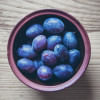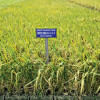Summer fruits for diabetes: What to eat, and how much?

We generally tend to think that sweet things are not good for people with diabetes. At first glance this seems to make sense. However, there is a big difference between the sugar that we find in a fruit and in the added sugar that we might sprinkle on top. In a fruit, the fructose accompanied by fibre, vitamins, minerals, and so many other nutrients are good for our bodies.
Fruits have other health benefits, ranging from controlling high blood pressure to reducing inflammation and even blood sugar levels. A person with diabetes should not avoid fruit in general, as it is essential for a balanced diet. When eating fruits, all we need to be mindful of is our serving sizes — one serving of fresh fruit is approximately the amount that can fit into the palm of an adult hand!
Spreading out the fruit intake in small portions throughout the day can prevent any rapid spikes in blood sugar. It is also advised that a diabetic person have fruits between 1-4 PM, as between hours our body's digestive power is at its peak. If one follows a workout regime, having fruits before and after the same is a good idea. This is the time when our body uses up the extra carbs quickly.
Fruit juice and smoothies ideally, need to be avoided or at least cut down on. This is because most of the roughage/fibres are removed or already broken down, so it is very easy to drink large quantities in a short space of time, harmful for a diabetic one. Having less intact fibre means fruit juices and smoothies are not as beneficial to the body compared to whole fruits. Fibre present in fruits helps to slow digestion and prevent a blood sugar spike. The high fibre and water content of summer fruits help to feel fuller.
Bottomline, any fruit is fine for a person with diabetes, so long as the portion size is controlled. Most important is to make smart choices about which fruits they eat and the quantities. Fruits in general will not cause a rapid spike in our blood sugar levels. However, very ripe bananas, watermelons, pineapples, mangoes, papayas, oranges, and grapes WILL cause our blood sugar to rise to some extent. We can avoid the spike by following the tips suggested above, or by taking fruits with a high fibre meal, which possesses a low glycaemic index.
Summer fruits: To avoid or in moderation?
Mango is an incredibly versatile fruit which is high in fibre and contains a lot of vitamin A. It is important to just limit the portion. Raw mango is extremely good to prevent sunstroke and weakness. It helps balance electrolytes in the body, which is highly required for a diabetic patient.
Jackfruit another twist on tropical fruit, is high in fibre and protein, which makes them a great choice for anyone looking to lower their blood sugar through healthy eating habits. Even some diabetic patient can take it as a meal replacement at day time.
Lychee are high in fibre and antioxidants, which can help reduce insulin resistance. However, after a meal which is high in fibre, 1 serving (3 to 4 pieces of a medium size lychee) can be taken on a hot summer day!
Watermelon is the number one food for a summer detox which is extremely alkaline-forming in the body. Also high in dietary fibre and potassium, which are beneficiary for a diabetic. It is best to consume watermelon and other high GI fruits at day time alongside foods that contain plenty of nutritious fats, fibre, and protein.
The writer of the article is the
Chief Dietician & Head of the Dept.
Clinical Dietetics and Nutrition, United Hospital ltd
AGS, BNDF
[email protected]

 For all latest news, follow The Daily Star's Google News channel.
For all latest news, follow The Daily Star's Google News channel. 








Comments